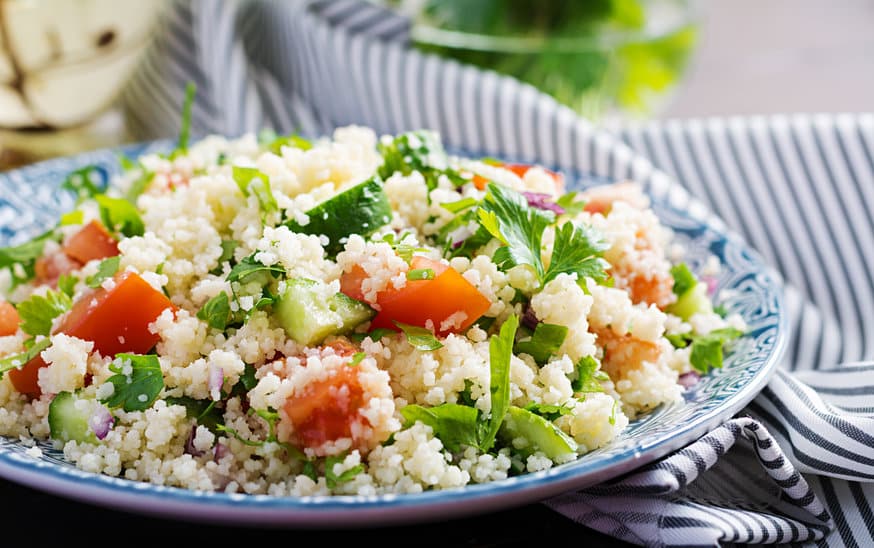By Sean Zucker –
Originally hailing from the mountains of Lebanon and Syria, tabbouleh has enjoyed a long history of popularity in the Middle East. After making its way oversees, the dish now has become a darling vegan-friendly option for many, leading to its current high-held status. Given the pedigree, it should be no surprise that tabbouleh is also nourishing and nutrient rich.
It goes by several names—tabouleh, tabbouli, tabouli and taboulah. But whatever it’s called, tabbouleh is essentially a cocktail of superfoods. The salad features a collection of nutritional staples commonly including parsley, bulgur, onions, garlic, peppermint, cucumbers, tomatoes, lemon juice and olive oil.
Bulgur, likely the least known ingredient of the mix, acts as the base and provides loads of fiber and protein. It’s also low in fat, holds potassium and iron, while boasting a low glycemic index. The addition of onions and garlic brings along many anti-inflammatory, anti-cholesterol, anti-cancer and antioxidant properties to the mix, helping it manage blood pressure and cholesterol levels, while possibly preventing cardiovascular disease, blood clots and even cancer.
Parsley, for its part, enjoys roughly three times as much vitamin C as oranges, while also being a good source of manganese, calcium, and potassium. Peppermint has been proven to treat indigestion, respiratory problems, headaches, nausea and fever. Cucumbers reduce diabetes risk and help control blood pressure. Tomatoes feature vitamins A, C, and K, wherein lemon juice provides vitamins B and C.
Livestrong adds that the dish is a low saturated fat with most the ingredients being almost entirely fat free. This is notable as saturated fat is believed to be the most harmful fat to the human body and its overall health.
While all this bodes wells for tabbouleh’s gastronomic powers, acclaimed cookbook author and culinary guide Anissa Helou notes that a lot of the tabbouleh available in the U.S. falls short of the original Lebanese dish and possibly misses much of its pure benefits.
“Tabbouleh has now gone truly global but before the world discovered and adopted it, it was one of very few dishes that the Lebanese could claim as their own,” she writes. “At first, the western version bore no resemblance to the Lebanese, but things have improved and you can now find much better ready-prepared tabbouleh although often it will have far too much bulgur in relation to the fresh herbs and tomatoes which should be the main ingredients.”
Fortunately, Helou provides tips on how to best prepare authentic tabbouleh. Using the freshest possible ingredients is crucial. She advises locating a market rather than a supermarket for the freshest and tenderest flat-leaf parsley and firm but ripe tomatoes. Also, prioritize fine dark Lebanese bulgur and avoid the pale Turkish variety.
Another key—avoid the food processor. Instead, get the sharpest knife available and chop away at the parsley, mint, garlic and peppermint. Then dice tomatoes, onions and cucumbers.
With seasoning, creativity and historical preference come into play.
“The seasoning varies from family to family or region to region. I learned from my mother and grandmother to use a pinch of cinnamon, a good dose of allspice (or the Lebanese 7-spice mixture), and some black pepper. My mother uses too much lemon juice. I prefer less, mainly because I often serve tabbouleh with wine. And, of course olive oil, the best you can afford,” Helou encourages.
The takeaway? If a meal needs a healthy, delicious salad—turning towards tabbouleh is a good bet.













